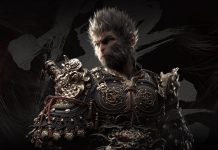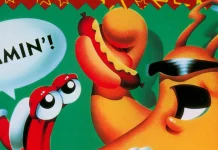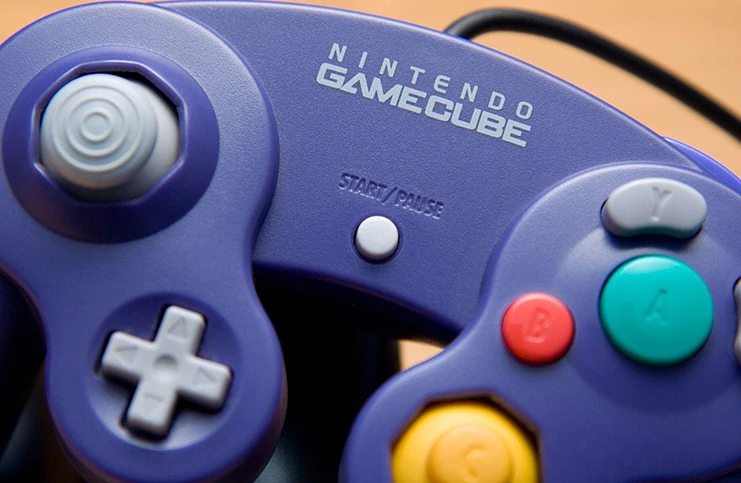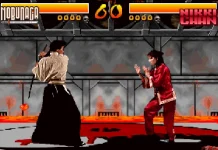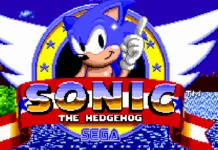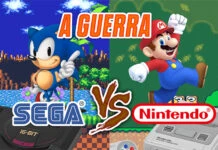In the fifth generation, the video game market was no longer the playground that Nintendo helped build and where it had been able to play freely until shortly before. Sega fell after years of good fight, but another threat even bigger emerged. The PlayStation trampled over its rivals, selling almost three times more than the second most sold machine. And worse still: it monopolized the public's attention. If they wanted to get back on top, the "Big N" would have to reinvent itself.
The main lesson was: ROM cartridges were part of the past. The stubbornness in using them on Nintendo 64 was lethal, driving away powerful partners as Square. Optical media offered more space at a lower cost. All competitors were already migrating from CDs to DVDs, and the public wondered: when would Nintendo put aside their cautious approach? Would they follow the path of evolution?
They did. But in the old "Nintendo Style", they didn't adopt the technology that everyone expected. Instead, they came up with their own disc format – innovating, yes, but in their own way. Why? Because we are Nintendo and we do things differently. Our games are enough to sell any device, they always have been...
They just forgot to coordinate with the gamers. Faced with a stellar PlayStation 2 and the new threat from Microsoft, the GameCube didn't have an easy life. It would end up as Nintendo's first main console relegated to a sad third place.
Way before the dolphin...
Nintendo and Sega: interwined histories
The Saturn was the darling of Sega Japan. After years of watching the American side of the company shine with the success of the Mega Drive in Europe and the Genesis in America, the Japanese team was keen to keep the reins of the new project. But the successor, with a complex, expensive and unusual design, was far from gaining American approval.
If it were up to Tom Kalinske, commander of the American team, the 32-bit machine would be based on a project by Silicon Graphics Inc. SGI was "only" the largest company in high-performance technology for the graphics sector at the time. Something like having a GPU from Nvidia or AMD nowadays.
But destiny had other plans, and they were summarily rejected by Sega of Japan. A unilateral decision by president Hayao Nakayama vetoed the deal. And unintentionally, he threw SGI on the lap of arch-rival Nintendo. There, they would make the Reality Coprocessor, the graphics and audio unit for the Nintendo 64.
But the 64 did not produce the desired results in Japan, with around 5.5 million units sold. In Europe it also disappointing: less than 7 million. It only performed well in North America, maintaining almost the entire user base of the Super Nintendo – around 23 million.
With over 60% of the console's sales worldwide, Nintendo of America gained the trust of its Japanese parent company. As then-vice president Howard Lincoln explained, they would have a more active role in the development of the next platform. "I saw a natural transition from the early 1980s, when our parent company essentially did everything, to today, where Nintendo of America has a large stake in the development of Dolphin."
A predictable repeat of the partnership with SGI were planned, but it began to go off rails.
SGI falling
SGI Chairman Jim Clark tried to sell SGI's technology to Sega years earlier. He had also been the liaison with Nintendo, following Kalinske's advice. Convinced of the great opportunity that video games represented, Clark sealed the deal that led to the design of the Reality CoProcessor.
But the year after the deal was signed, the media speculated about an internal power struggle at SGI. Clark and the President, Edward "Ed" McCracken, were no longer on good terms.1Dromble - A dolphin's tale (arquivo).. McCracken, ex-president of Hewlett-Packard, had support from the major shareholder, Glenn Mueller2The Guardian - Unsung hero of the net, the one responsible for taking him there. Both had more influence on SGI than Clark, and the sides were colliding about what route they should take.
For Clark, Microsoft would soon dominate the computer graphics segment. When that happened, the once-prestigious Silicon Graphics would be in a bad way. They needed to invest in mass-market products, not expensive hardware for companies. From that perspective, it made sense to move into video games as soon as possible.
McCracken was all against it.

Clark was convinced that McCracken would destroy SGI and the relationship between them became impossible. According to journalist Michael Lewis in his book "The New New Thing: A History of Silicon Valley", Clark offended him so badly, to the point of made him cry during a meeting.
In a blatant case of corporative bullying, Clark changed the sign at the door of his office to make fun of his name:
Clark once replaced the nameplate on McCracken's office door with one that read ED MCMUFFIN (the joke stemming from Clark's teenage daughter's inability to remember the name McCracken). For four days, no one noticed. Clark later hounded McCracken at meetings with references to the incident, adding insult to injury.
After selling part of his SGI stock to Mueller, Clark was left with only a 15% stake. Regretful and without a word in the direction of the company, he chose to leave in 1994 to found Netscape.
This turmoil caused discomfort at Nintendo. Although the work was completed, the atmosphere at SGI became chaotic. President Thomas Jermoluk left two months before the launch of the Nintendo 64.
Goodbye SGI and Nintendo 3DO?
Clark's departure from SGI came at a bad time for Nintendo. With the PlayStation's growing popularity and the Nintendo 64's underwhelming sales in Japan, they needed to speed up the design of the next generation. SGI's best engineers had moved on to companies like Nvidia and NEC. With few options left, they began negotiating with 3DO.
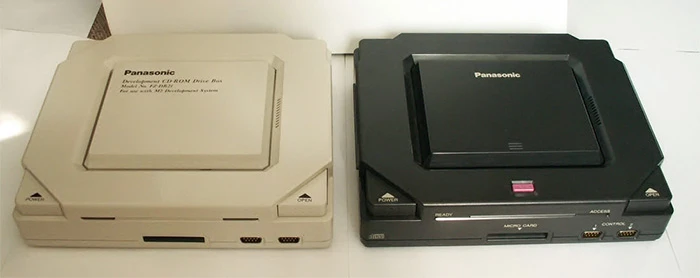
3DO had the M2 technology, a possible add-on for the 3DO console or – if Nintendo was interested – the basis for a new standalone hardware. But after giving Panasonic exclusive rights, they simply abandoned the project in their hands. Not long after, in 1997, the entire 3DO hardware division was sold to Samsung, which renamed it CagEnt, and determined that they would have to make profit within two years.[efn_note]CBR - Samsung buys out 3DO's hardware systems business for $20 M[/efn_note].
CagEnt had three technologies: a DVD system, a video encoding called MPEG Xpress and a nearly ready console, with a chipset evolved from the M2, called MX. The M2 was sold by 3DO to Panasonic, but the "upgrade" by CagEnt was called the MX project – and was only not included in Dolphin due to issues in the final phase of the agreements. The technology was sold to Microsoft's WebTV.
McCracken's ability to lead SGI began to be questioned. Problems piled up and several engineers jumped the ship. He finally left the company in October 1997 – and in a restructuring, between 700 and 1,000 employees were laid off.[efn_note]SF Gate - McCracken leaves SGI; 700 to 1000 laid off[/efn_note].
Almost three years of negotiations between Nintendo and 3DO were at risk. Howard Lincoln and Genyo Takeda visited the facilities and at the end of the year, Nintendo made an offer to buy CagEnt and the MX[efn_note]Next Generation Online - 04/1998[/efn_note]. And so the partnership with SGI ended.
Adrian Sfarti, the engineer who designed SGI's Indy stations, was the leader of the MX project. It was a much improved chip compared to the M2, capable of a fill rate* of 100 million pixels with its dual PowerPC 602 CPU. The Nintendo 64, for example, reached a peak of approximately 30 million in real-world use situations (with effects such as mip-mapping, fog, etc.). According to CagEnt executives, the MX would also process four million polygons per second at peak (the N64 was around 160 thousand).
ArtX, the SGI 2.0

Negotiations followed as Nintendo worked closely with CagEnt engineers. Preliminary plan: redesign the MX. It should have a MIPS CPU*, since NEC, another Nintendo partner, had a license for that architecture, but not for IBM's PowerPC 602.
Nintendo and CagEnt also discussed whether the machine would use CDs or DVDs. Even after the apparent depletion of cartridges, Nintendo insisted on them as the main media for the new console. But since CagEnt would include DVD and MPEG technologies in its package, they needed to make good use of them. It would therefore be at least a hybrid system, with cartridges and discs.
A Nintendo's video game based on the CagEnt MX had good commercial prospects. It could hit the Japanese shelves in 1999, perhaps before the new generation from Sony. Development kits would be ready for shipment soon after, at least to major teams like Rare and Nintendo of Japan. The scenario was auspicious.
Although the agreed-upon price for the acquisition of CagEnt was very low, negotiations began to fall apart in early 1998, when Samsung and Nintendo disagreed on the final terms. Samsung began aggressively seeking a buyer for CagEnt, as if desperately trying to get away from Nintendo.
Sega, 3Dfx, and others negotiated, but the company ended up with CagEnt was Microsoft's WebTV division — and some of the remaining 3DO and M2 professionals like Tim Bucher, Dave Riola, and Nick Baker would end up on the team that built the Xbox.3The Mercury News - A Walk Through The Xbox 360 Evaluation Lab At Microsoft’s Mountain View.
Without the partnership that had been honed for years, without MX and no engineers to complete the mission on their own, Nintendo was lost and without a compass when it was almost forced to negotiate with ArtX.
Founded in 1997, the company's goal was to develop graphics hardware. The team of twenty engineers from SGI was led by Dr. Wei Yen, chief engineer in the creation of the Reality Coprocessor. On the one hand, this ex-SGI team was a source of confidence for Nintendo. But unlike CagEnt with its MX, ArtX didn't have complete or even half-complete hardware to offer. They would have to start almost from scratch, leading to the expectation of having a product, optimistically, by Christmas 2000.
To make it worse, SGI was filing lawsuits against former employees and their new companies, which put Nintendo in an uncomfortable situation: basing its platform on something that could be the target of legal disputes at any moment.
Legal issues

The Nintendo and ArtX deal was established in mid-1998, and the design of the graphics chip soon began. As feared, SGI sued ArtX. MIPS also threatened them and Nintendo's partnership were soon cornered by several lawsuits: illegal competition, use of secret information, interference with economic advantage and breach of contract. Some employees were sued in civil court, such as Yen and co-founder and technical director Tim Van Hook.
SGI, however, would drop the lawsuits in 1998. Nintendo broke off relations with the MIPS Group – which had made US$45 million per year in royalties from the Nintendo 64 CPU. According to former SGI employees4The Register - ATI confirms $400m ArtX takeover, the lawsuits were dropped because the company didn't want future problems with Nintendo.
Finally, the sea was open for the dolphin, and teams closed.
It’s worth noting that Jim Clark was right about Silicon Graphics' bleak future. When Intel machines running Windows became affordable, Silicon’s expensive workstations lost steam. They would make a series of ill-fated bets, such as migrating from MIPS to Intel Itanium processors and building supercomputers. None of these worked, and SGI went bankrupt in 2009.
Shaping the dolphin
ArtX suggested a modern video game system with features like video decompression and image processing. It would be multimedia and not just for games. According to Van Hook[efn_note]Kidscreen - The plumber's apprentice[/efn_note], Nintendo considered the proposal, but opted for a prudent strategy – and according to the story, with an incredible display of humility:
By the time preliminary discussions began about a next-generation console, Sega had dropped out of the business, Sony was the major competitor, and Microsoft was poised to enter. The latter two companies proclaimed themselves eager to "own the living room", with a complete home entertainment system: games, television, movies, Internet. We prepared our all-inclusive competing proposal, a universal "multi-media engine".Sure, it would cost more, and early production units might have to be subsidized by game sales. Nintendo considered our vision. We waited. Finally, they explained that they would not be able to proceed in that direction. "We are a very small game company. We do not have the resources of these others."

Satoru Iwata, who took over as president of Nintendo in 2002, would defend the decision. Despite having reserves of over US$6 billion at the time, he assured that there was no choice[efn_note]CNN Money - Is Nintendo Playing The Wrong Game?[/efn_note]. "They [Sony and Microsoft]have such vast reserves that they make us look poor. We have to find a way to compete without it becoming a question of which company is richer."
The project went on under names that the press used, such as N2000, Star Cube and Nintendo Advance. On May 4, 1999, the media revealed more details. The internal code name was Dolphin[efn_note]IGN - Say hello to Project Dolphin[/efn_note] and four teams already had development kits: Rare, Retro Studios, Nintendo EAD and Nintendo Software Technology. ArtX's chip, called Flipper, was believed to be good and cheap. It was not yet decided whether the dolphin* would use DVD or not, but i n any case, it would be easier to program than the Nintendo 64.
During E3 1999 in May, Howard Lincoln announced the Nintendo Dolphin, giving previously unseen details of its specifications[efn_note]IGN - Nintendo press conference transcription[/efn_note]. The executive confirmed the codename, stating that it would be "extremely powerful" but "not expensive", with a target of launching by the end of the year 2000. It was also confirmed that the GPU would be developed by ArtX under the command of Dr. Yen.
IBM and Panasonic on board

Lincoln also talked about the Dolphin's CPU. Nintendo would close a $1 billion deal with IBM to design Gekko, a 400 MHz processor. But the big reveal was the confirmation of news from Japan the day before. Matsushita (Panasonic) would produce a DVD drive for the Dolphin:
Well, as you know, the world's most powerful CPU and the best graphics chip need to run games on... something. Some media. And this time, the media won't be cartridges! Dolphin's software will not only be very cheap and fast to manufacture, it will also be tamper-proof.
Matsushita and Nintendo had announced the partnership the day before, in a hotel in Tokyo, with the presence of their presidents, Yoishi Morishita and Hiroshi Yamauchi5Variety - Matsushita is game for Nintendo’s deal. The plans were big and bold: the first would develop a closed DVD system (i.e., incompatible with standard DVDs). They would also manufacture Dolphin-compatible discs and players, set-top boxes, and other devices under the Panasonic brand. Nintendo would provide integration between Dolphin and Matsushita-branded media such as movies, music, and other exploitables.
Nintendo wanted, above all, to protect itself against piracy. With most of its profits coming from its own franchises, easy copying of discs would be a recipe for disaster. And of course, in the process, they would beat the new PlayStation.
"We are absolutely confident that Dolphin's graphics will be equal to or better than anything our friends at Sony can achieve with the PlayStation 2," a confident Lincoln said at the keynote. Until October 1999, Nintendo had invested nearly $3 billion in components. NEC built a $761 million factory in Japan just to produce parts for the upcoming GameCube.6IGN - Piecing Dolphin together. According to an anonymous source at Nintendo, they wanted the console on the market by October of the following year, but even inside, they didn't believe in the deadline.[efn_note]IGN - It's Alive[/efn_note].
"It all depends on how well the 1999 Nintendo 64 software lineup goes," the source said. "If titles like Perfect Dark and Donkey Kong 64 do well, we won't see new Nintendo hardware until 2001."

In any case, it was no secret that the focus had been on the sixth generation for some time. Almost a year earlier, Shigeru Miyamoto had said that the cancellation of the sequel for the game 1080º was due to the team being reassigned to research on the new hardware.
Delayed
In March 2000, Nintendo announced that the Dolphin would not be released until 2000, at least in the United States. 7ZDNet - Nintendo delays Dolphin console. The estimate was for the first half of 2001; it was a response to the Xbox, scheduled for the second half of 2001.8IGN - Nintendo makes Dolphin delay official.
Keeping its classic blasé attitude toward problems, Nintendo of America played it down. Vice President of Sales, Peter Main said the delay was both normal and positive:
A 2001 release of Project Dolphin will not only maintain the normal lifespan of our consoles, but it will also bring two important benefits. First, it will allow millions of current Nintendo 64 owners to invest their money in the best lineup of new games in our history without having to buy a new system.* Second, Dolphin's new release date means that our system will hit the market next year with a portfolio of games across all genres that simply cannot be matched by anyone else.

The Nintendo 64 was not paving a solid way for its successor, doing poorly in Japan and quietly in the United States. It was crucial to keep the GameCube's price competitive with the PlayStation 2, which would be released that month. Hiroshi Imanishi, one of Nintendo's chieftains and Yamauchi's advisor, considered this a major challenge. Component prices were rising.
The problem was that everyone was waiting for the PlayStation 2: the press, gamers and the industry itself. Sony managed to create an unparalleled hype until then, monopolizing general interest with promises that gave it an almost science fiction aura.
Nintendo needed to hurt its rival somehow. The American team considered releasing the GameCube at the same time, using technical comparisons to seduce the public.
9IGN - 33% more powerful than PS2. "In terms of graphics, we have an extremely fast architecture, that our engineers say will be 33 percent faster than the performance figures projected for the PlayStation 2," boasted Axel Herr, Nintendo's marketing director for Europe. "That's easily twice as fast as the Dreamcast."
One factor in the Nintendo 64's uneven performance, according to market analysts, was delays from when it was Project Reality and then Ultra 64. By the time it arrived, Sony had opened up an irretrievable lead. Nintendo didn't want to repeat that history, and Yamauchi was determined to have Dolphin out by the end of 2000.10IGN - Yamauchi Reiterates Low Price and Holiday Release. And at an affordable price:
A console that sells for around 40,000 yen [US$380] can be bought by a young person old enough to have a part-time job, but it is generally too expensive to be aimed at children. The Dolphin will not be that expensive.
Lincoln also downplayed the importance of the GameCube's delay. Asked if the delay could lead to the same fate as its predecessor, he said that the important thing was to have games:
If you look at the N64 experience, I don't think we were hurt by being late or behind Sony. More likely our hurt was the number of games – but the number of games has more to do with development tools issues, and we don't want to make the same mistake with Dolphin.
Revelação

But before it, ArtX becomes ATI
With sights set on new horizons, veteran ATI bought a majority stake in ArtX for $400 million in April 2000, absorbing the company. 11EETimes - ATI acquires ArtX in graphics merger.
Analysts saw it as a positive for ArtX, since they probably wouldn't make as much money from the GameCube. Yen became a board member, and chairman Dave Orton took over as president and COO. ATI founder K.Y. Ho became chairman.
The merger wouldn't affect Dolphin: by then, the graphics chip was practically ready. An ATI spokesman said they were becoming "a leading supplier to the console market through Nintendo. The Dolphin platform will be renowned as the king of graphics and video performance with its 128-bit architecture."
Lincoln, in turn, said that "in terms of technology, I am absolutely convinced that the Dolphin will be as good as the PlayStation 2. I am sure that both will be super."
The GameCube was revealed at the Nintendo Space World conference in Tokyo on August 24 of that year. Until then known as the Dolphin, it was scheduled for July 2001 and in an interview, Iwata even laughed at analysts' suggestion that it was delayed.[efn_note]IGN - Nintendo Dream Interviews Nintendo's Satoru Iwata[/efn_note].

At the event, Takeda reinforced Nintendo's commitment to games, trying to distance itself from Sony and Microsoft. "We have no reason to spread our machines to an audience that would later use them for different audiovisual purposes. We focus on having the best possible machine for playing games," he said.[efn_note]ABC - Nintendo Unveils New Video-Game Console[/efn_note]
In April 2001, the launch was postponed from July to September 2001 in Japan and two months later in America.[efn_note]ZDNet - Nintendo to delay GameCube launch[/efn_note].
The Western presentation was at E3 in May 2001. Under the slogan "The Nintendo Difference", Miyamoto took the stage and inaugurated the GameCube in America, carrying the console and a controller in his raised hands. "Let me introduce our new baby. Like all babies, he's small, but he makes a lot of noise", he joked, to the laughter of the audience.
The presentation included the games Super Smash Bros. Melee and Luigi's Mansion, and accessories such as the standard controller and the Wavebird controller (wireless). The audience reception was considered positive.
If not, Yamauchi considered suspending the launch, as he said shortly after E3[efn_note]Console City - interview by Patrick Garratt, 24/05/2001 (archive)[/efn_note]. Nintendo's president took the opportunity to be a bit dismissive of the Xbox, stating that Microsoft was only focused on performance.

And more than that, he didn't even consider them competitors:
The ideas behind Xbox and Game Cube are fundamentally different. Xbox has a built-in hard drive and is being touted as an extension of a PC. Microsoft is going after performance only, and does not understand that the game is played with software. A Nintendo is ultimately a toy. It is the most advanced machine for playing games, and it is totally different from the Microsoft product. It is just like trying to compare a sumo wrestler and pro wrestler; they play by totally different rules. We do not consider Microsoft to be our competitor.
Yamauchi also didn't see – or pretended not to see – a threat from Sony. He showed confidence in Nintendo's games, as products that rivals couldn't match. His strategy was to profit from games, selling the GameCube cheaply. "People don't play with the machine itself. They need software and are forced to buy the machine in order to use the software. So the price of the machine has to be as low as possible."
Miyamoto echoed the president. According to him, the public could even have a PlayStation 2 or Xbox, but they would not give up a GameCube for the sake of games. When asked about the subject after the reveal at SpaceWorld, he was categorical:

Well, I don't feel the slightest threat coming from the PlayStation 2 and to be quite frank, I'm not even worried about the PS2's existence either, because we created the GameCube hardware and we're going to create the software that will become a requirement for everyone even if they already have a PlayStation 2.
Imanishi also did not see Sony and Microsoft as competitors.12IGN - Imanishi talks Cube. "If I had to name a console that would threaten the GameCube, it would be the Game Boy Advance," he said without the slightest modesty. "Honestly, some might say we are trying to look strong, but we are not thinking specifically about the much talked about competition or rivals."
Fifteen games were in the works, including Star Wars Rogue Squadron II: Rogue Leader. Nintendo was simultaneously promoting the Game Boy Advance, and several games planned for the Nintendo 64 were canceled. The last first-part games for it (Dōbutsu no Mori and Mario Party 64) came out in April 2001, about two months before the GBA and six months before the GameCube.


